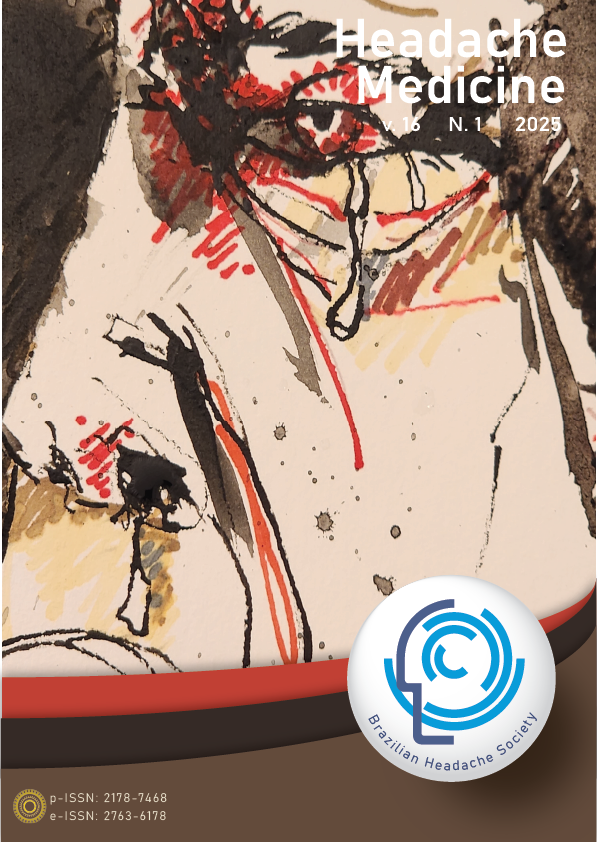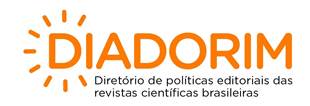Hyperacusis and plasma levels of cytokines in migraine
Views: 512DOI:
https://doi.org/10.48208/HeadacheMed.2025.7Keywords:
Hyperacusis, Migraine, Cytokines, InterleukinsAbstract
Introduction
Migraine is a chronic pain that represents a public health problem and compromises quality of life, with an inflammatory factor involved in its pathophysiology.
Objective
To verify whether there is an increase in serum cytokines in patients with migraine associated with hyperacusis.
Methods
The sample consisted of 80 participants in the episodic and/or chronic migraine group, with/without aura, and 80 healthy individuals; aged 18 to 60 years of both sexes. Instruments used: ID-migraine, Migraine Disability Assessment (MIDAS); Short-Form Headache Impact Test (HIT-6), State Trait Anxiety Inventory (STAI) Y1 Y2, Beck Inventory, Allodynia and Hyperacusis Questionnaire; interleukin dosage by flow cytometry.
Results
The sample was homogeneous for sex, age and race (p>0.05). There was an association between hyperacusis and migraine (p<0.001). 41.2% of patients with migraine had hyperacusis. The majority of the population with migraine had phonophobia (87.8%); photophobia (93.7%); osmophobia (61.5%); episodic migraine (65.4%); prodrome and postdrome in 80% of them; half of them did not have aura (52%) or allodynia (53.2%). Regarding serum cytokine levels, they had higher levels of IL-2 and TNF-α (Mann-Whitney, p<0.001). INF-γ, IL-4, IL-6, IL-10 in plasma did not differ statistically between the control and migraine groups (Mann-Whitney, p>0.05). The association of hyperacusis with cytokines IL-2, IL-4 and TNFA (Mann-Whitney, p>0.05) in migraine patients was observed.
Conclusion
It was possible to verify that there was a significant difference in plasma cytokine levels between the groups. The increase in inflammatory markers indicates the possibility of complementary treatment, allowing the intervention of other professionals from multi and interdisciplinary teams.
Downloads
References
Charles A. The pathophysiology of migraine: implications for clinical management. Lancet Neurol 2018;17:174–82. Doi:10.1016/S1474-4422(17)30435-0.
Vincent M. Fisiopatologia da enxaqueca (ou migrânea). Medicina (Ribeirão Preto) 1997;30:428–36. Doi:10.11606/issn.2176-7262.v30i4p428-436.
QUEIROZ LP DE, RAPOPORT AM, SHEFTELL FD. Características clínicas da enxaqueca sem aura. Arq Neuropsiquiatr 1998;56:78–82. Doi:10.1590/S0004-282X1998000100012.
Stovner LJ, Nichols E, Steiner TJ, Abd-Allah F, Abdelalim A, Al-Raddadi RM, et al. Global, regional, and national burden of migraine and tension-type headache, 1990–2016: a systematic analysis for the Global Burden of Disease Study 2016. Lancet Neurol 2018;17:954–76. Doi:10.1016/S1474-4422(18)30322-3.
Olesen J. International Classification of Headache Disorders. Lancet Neurol 2018;17:396–7. Doi:10.1016/S1474-4422(18)30085-1.
Viana M, Sances G, Ghiotto N, Guaschino E, Allena M, Nappi G, et al. Variability of the characteristics of a migraine attack within patients. Cephalalgia 2016;36:825–30. Doi:10.1177/0333102415613612.
Milagres AC de A, Paula CL de, Mendonça E, Costa LM da SG, Assis MS de, Jurno ME, et al. Prevalence of osmophobia in migrainous patients and analysis of triggering odors. Revista Médica de Minas Gerais 2018;28. Doi:10.5935/2238-3182.20180024.
Maciel NM. Brain morphology, functional performance, and clinical features of migraine patients - a cross-sectional study. Universidade de São Paulo, 2022. Doi:10.11606/T.17.2022.tde-20062022-153053.
Varella PP V, Forte WCN. Citocinas : revisão. Rev Bras Alergia Imunopatol 2001;4:146–54.
Tonet AC, Nóbrega O de T. Imunossenescência: a relação entre leucócitos, citocinas e doenças crônicas. Revista Brasileira de Geriatria e Gerontologia 2008;11:259–73. Doi:10.1590/1809-9823.2008.110210.
Vicente I, Carneiro M. Hiperacusia na infância: revisão de literatura 2021:1–10.
Gonçalves MS, Tochetto TM. HIPERACUSIA: UMA ABORDAGEM TEÓRICA Hyperacusis: theoretical approach. Rev CEFAC 2005;7:234–40.
Costa NMT da C e. Hiperacúsia: uma revisão da literatura. dissertação. Universidade de Lisboa, 2019.
Sanchez TG, Pedalini MEB, Bento RF. Hiperacusia : Artigo de Revisão. Fundação Otorrinolaringol 1999;3.
Maistro BC, Machado ACO, Bossa BB, Bello VA, Frederico RCP, Silva AV da. Preditores de hiperacusia na migrânea. Headache Medicine 2021;12:33. Doi:10.48208/HeadacheMed.2021.Supplement.33.
Stefanelli ACGF, Zanchetta S, Furtado EF. Hiper-responsividade auditiva no transtorno do espectro autista, terminologias e mecanismos fisiológicos envolvidos: revisão sistemática. Codas 2020;32. Doi:10.1590/2317-1782/20192018287.
Machado LMA, Rodrigues Junior GM. Formas de enxaqueca existentes e sua fisiopatologia uma revisão de literatura n.d.
Cal R, Bahmad Jr F. Enxaqueca associada a disfunção auditivo-vestibular. Revista Brasileira de Otorrinolaringologia 2008;74:606–12. Doi:10.1590/S0034-72992008000400020.
Silva-Néto RP da. Osmofobia e cefaleia desencadeada por odores em pacientes com migrânea e cefaleia do tipo tensional. dissertation. Federal University of Pernambuco, 2012.
Oliveira CMB de, Sakata RK, Issy AM, Gerola LR, Salomão R. Citocinas e dor. Rev Bras Anestesiol 2011;61:260–5. Doi:10.1590/S0034-70942011000200014.
Napoleão RNM, Santiago ABG, Moreira MA, Silva SL da, Silva SFR da. COVID-19: Compreendendo a “tempestade de citocinas.” Research, Society and Development 2021;10:e43710515150. Doi:10.33448/rsd-v10i5.15150.
Downloads
Published
How to Cite
Issue
Section
License
Copyright (c) 2025 Franciela Massi de Castro, Aline Vitali da Silva, Valéria Aparecida Bello, Regina Célia Poli (Author)

This work is licensed under a Creative Commons Attribution 4.0 International License.












